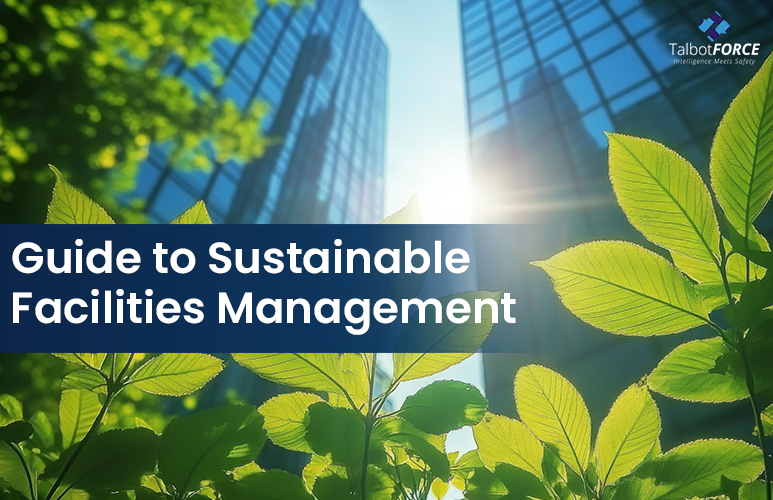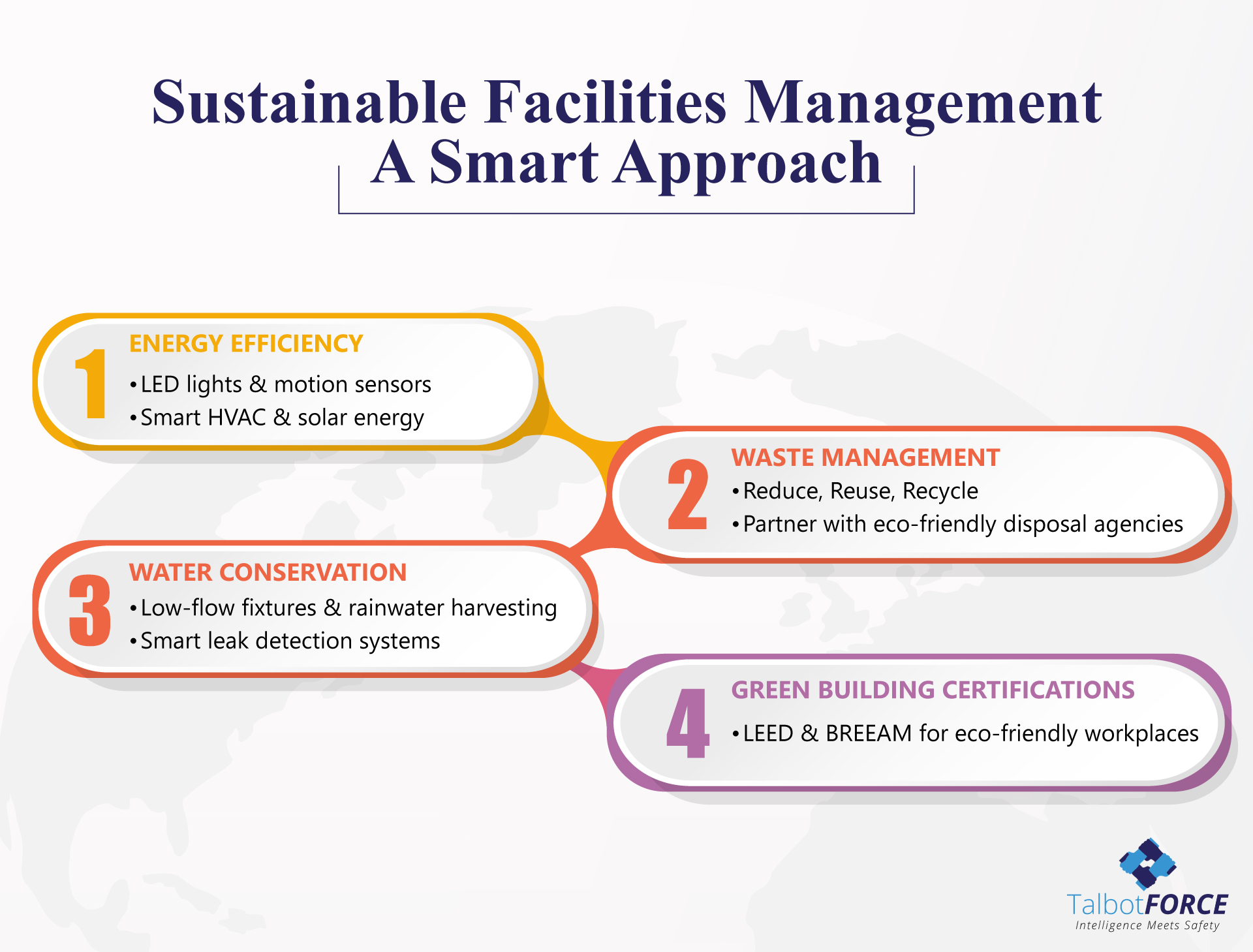Guide to Sustainable Facilities Management
Sustainability has grown from a buzzword to a crucial part of business operations. From being energy-efficient and minimising waste to using smart technology, sustainable facilities management is changing the face of future work environments. As companies struggle to lower their environmental footprint while achieving efficiency.
The Facility management services play a role in incorporating sustainable practices into daily operations. In this guide, we analyse the most essential features of sustainable facilities management as well as facility management’s upcoming trends that are shaping the business.
Understanding Sustainable Facilities Management
Sustainable facility management means combining green practices into the equation of keeping facilities running efficiently but not affecting the environment adversely. Sustainability, to the facilities manager, means establishing that fine line between operational efficiencies and eco-consciousness and keeping that at the heart of your strategy. That includes minimizing energy use, optimal waste reduction, conserving water and sustainable resource use.
Key Strategies for Sustainable Facilities Management
1. Energy Efficiency and Renewable Energy
Cutting down energy usage is perhaps the best means of integrating sustainability into facility management. Installing LED lights and motion sensors to reduce energy wastage, installing HVAC systems that adapt energy consumption to the level of occupancy, and solar panels and other renewable energy systems to reduce reliance on fossil fuels are some of the most important strategies for energy conservation.
2. Sustainable Waste Management
Waste management is a significant aspect of environmental conservation. Waste management can be achieved through recycling and composting programs within the workplace, reducing waste to limit packaging and one-time plastics, and collaborating with environmentally friendly disposal agencies to facilitate proper waste management.
3. Water Conservation Measures
Water is a precious resource and water conservation should be of utmost concern to facility managers. The use of water-saving fixtures such as low-flow toilets and faucets, rainwater harvesting for landscaping, and smart technology for real-time leak detection and monitoring can all save water and help make facilities more sustainable.
4. Green Building Certifications
Most organisations target green building certifications like LEED (Leadership in Energy and Environmental Design) or BREEAM (Building Research Establishment Environmental Assessment Method). These certifications acknowledge buildings that achieve high levels of sustainability, including factors such as energy efficiency, indoor air quality, and conservation of resources.
Obtaining such certifications not only enhances the reputation of a company but also enhances employee satisfaction and productivity in environmentally friendly work environments.
The Use of Technology in Sustainable Facility Management
Technology has a significant contribution to shaping the future directions of facility management. Intelligent building solutions, Iot-enabled products, and AI-based analytics assist facility managers in making their sustainability initiatives better. Iot-enabled sensors to track real-time energy and water usage enable facility managers to maximise utilisation. Automated building management systems (BMS) are employed to make operations more efficient by consolidating the control of lighting, HVAC, and security systems, and detecting equipment faults before they become major problems, minimising waste and downtime.
Future Trends in Facility Management
The facilities management sector keeps changing with serious developments that are shaping the direction of sustainable techniques. Many corporations are attempting to become carbon-neutral, meaning that they’re using cleaner energy and trying to balance out their emissions of carbon. Recycling and regenerating materials matter a lot as well because business houses want to waste less and be more cost-effective.
Offices are becoming greener, too—in every sense of the word! Indoor plants, green walls, and improved natural lighting are turning workplaces into healthier, more calming spaces. Firms are also taking a closer look at where they source their materials, selecting suppliers that meet ethical and sustainable standards. As climate change looms larger, businesses are making their buildings stronger and preparing them to face extreme weather, among other disasters.
The Business Benefits of Sustainable Facilities Management
Sustainable facility management isn’t all about green for the environment—it has real business advantages, too. Energy- and water-conserving systems allow businesses to cut long-term costs. Strong emphasis on sustainability earns positive word of mouth for businesses as a whole and differentiates them from their less environmentally responsible counterparts, pulling in environmentally minded clients.
Green workspaces are healthier to work in and better places overall, translating to more productive and happy workers. As governments continue to impose sustainability regulations, remaining compliant not only preserves legal standing but also prevents businesses from suffering potential fines.
Conclusion
Simply put, sustainable facility management is exceedingly important to businesses that wish to remain successful in an environmentally conscious world. By conserving energy, reducing waste, implementing the most current technologies, and maintaining an awareness of new trends, businesses can design smarter, greener environments.
The future of facility management is all about sustainability, and companies that make it a priority now will be ahead of the curve. Going green isn’t just eco-friendly—it’s also good for business, makes employees happy, and makes the brand look good!

